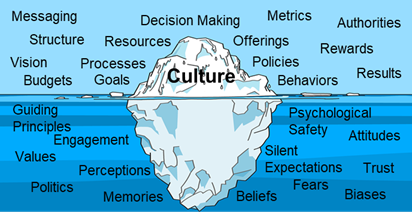
An oft-cited quote in business is “Culture eats strategy for breakfast.” The point being that the influence of culture is stronger than the influence of strategy. That how things are done is more powerful than an organization’s plans. That even great strategies fail if they are at odds with an organization’s capability. That an organization’s ability to execute is more important than its strategy. By the way, this quote is often attributed to management consultant Peter Drucker who actually denied saying it. It has also been attributed to famous CEOs including Steve Jobs, Jack Welch, and Louis Gerstner.
Studies on successful businesses as well as those that have failed find that both execution and strategy are responsible. Either bad execution or bad strategy can ruin a business. Some say that if you are executing a bad strategy, it doesn’t matter how well you execute it. You will fail. But then some equally argue that a great strategy implemented poorly can lead to failure.
Rather than debate the importance of strategy versus how things get done, maybe the attention should be on ensuring things get done well. Then whatever the strategy, it has the best chance of success. Attention can then be given to developing new strategies that take advantage of the organization’s ability to implement them.
Backing up a little, what is the definition of culture? The definition given by Merriam-Webster is: “the set of shared attitudes, values, goals, and practices that characterizes an institution or organization.” My simplified definition is “how we do things around here” with “here” being a team, company, family, country, or virtually any group of people. Yes, families have a culture which can override the best intentions and strategies they have as well.
“How we do things around here” includes everything. If you disagree, try to think of something that doesn’t impact culture. You’ll find that there is virtually no limit to what influences culture. Therefore, if you want to establish a desirable culture that enables your team, company, or family to achieve its strategies and goals, anything and everything might deserve your attention. This includes what is observable, like the top of an iceberg, but also what is hidden which is often even more substantial.
If you want to assess your culture, listed below are some of the most impactful areas to consider. Use this as a checklist or as a guide as you strive to shape your desired culture:
- Mission, vision, goals, priorities, and strategies that provide the organization’s overall guidance
- Core values, principles, and philosophies that underpin the organization’s most sacred traits
- KPIs, metrics, incentives, and expectations of performance – both explicit and implicit
- Symbols of performance including dashboards, reports, praise, and results
- Leadership’s influences including their examples, character, integrity, confidence, positivity, advocacy, and help provided
- How people are treated and valued in comparison to other elements such as financial performance
- How customers are viewed and treated in comparison to other elements
- How customers and external entities view your team and what your team does
- The prevailing attitude of the people on the team such as having a can-do attitude
- The level of people’s engagement and morale measured by how many outsiders want to join
- How vulnerable, authentic, and psychologically safe people feel and act
- How ideas, feedback and differences of opinion are shared
- The organization’s ability to learn, adapt, change, and innovate
- The level of collaboration, teamwork, and people’s willingness to help each other
- How work is performed including processes, methods, and procedures
- How roles and responsibilities are defined
- The level of individual autonomy and authority
- Structure and hierarchy
- Policies
- How decisions are made and plans created – e.g. top down, bottoms up, by committee
- How past decisions, behaviors, successes, and failures are viewed
- How information is communicated
- The attention given to people’s development and career progression
- How expenses, money, and budgets are allocated
- The resources provided that enable success including systems, equipment, and facilities
- Embedded fears, biases, and beliefs – both conscious and subconscious
To the extent you impact these areas, you impact your culture.
PDF version of this article: https://alpinelink.com/docs/How_to_Shape_Culture.pdf
